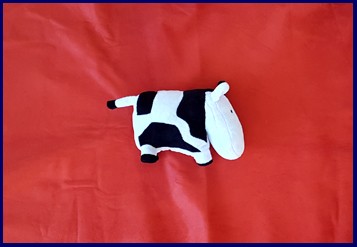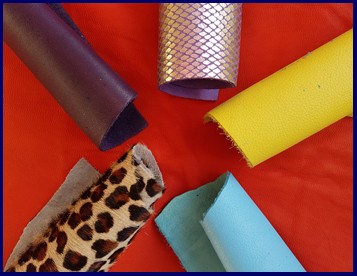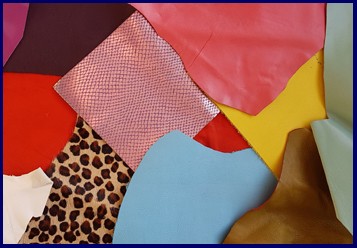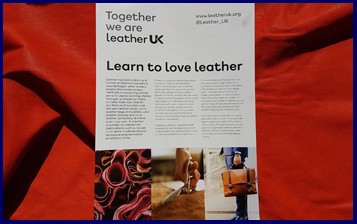Leather, veganism and the next 10 years
Have you noticed the number of vegan footwear ranges that have been launched in the past year? Wellness and healthy eating trends are receiving lots of press. Therefore it’s unsurprising that shoe companies are catering to a desire by some consumers to avoid animal products.
I interviewed Kerry Senior, Director of Leather UK about this trade association’s efforts to enlighten consumers. The leather industry has received some negative media coverage recently, and I wanted to know the real story.

1. How has the shift towards vegan diets impacted the UK leather industry?
So far, there has been no tangible effect on the UK leather industry, from the trend towards veganism. It is important to remember that, even by conservative estimates, 90% of the UK population still eats meat and as such, should have no qualms about using leather.
The UK leather industry is also, for the most part, supplying to the upper end of the market, where there have been no obvious declines in leather use. Of much greater concern is the general downturn in global leather consumption, particularly in the footwear sector, which has been driven by economic factors such as the surge in 2013-14 in the cost of hides and consequently, leather, and the potentially very significant impact of Brexit.

That is not to say that the industry can afford to be blasé about the potential impact of veganism. While global meat consumption is predicted to rise, regional variation is likely. If a reduction in beef consumption in the UK and Europe, where veganism is very on-trend at the moment, led to a contraction in the number of hides produced in the UK, it would impact on UK leather manufacturers who, for the most part, use hides sourced in the UK and Europe.
2. Is this reflected globally?
Global meat consumption is rising. In fact, we currently have a surplus of hides and skins that are not being converted to leather and consequently, will be disposed of. This suggests that the current decline in demand for leather is not due to a shift towards veganism. As in the UK, it’s likely that economic factors are far more relevant to the global trade of leather, than veganism.

3. What is your approach to combating negative press about leather?
Until recently, the industry had usually opted to ignore negative press about leather. This was clearly not the right approach and it is heartening to see trade associations and groups like Leather Naturally actively and publicly challenging misleading false claims.
Leather UK is taking a two-pronged approach to this issue. We are very active in refuting false claims about leather, directly and through social media, and we are also working to spread a positive message about leather through a variety of media, such as the production of our leaflet, ‘Learn to Love Leather’, our collaboration with the Institute for Creative Leather Technology at the University of Northampton to produce an informative animation, ‘Where does Leather come from?’ and through the provision of facts and figures about the leather industry on our website.
However, there is much more to do and a great need to raise the profile of leather in the consciousness of the consumer. We are currently developing two further animations to educate the consumer about leather and the environment, and the use of chemicals in leather production. A lot of work is being done in the area, including the proposed promotional campaign from Leather Naturally, the current campaign by the European association, COTANCE, and the development of the Leather Trust in Northampton, which will provide the opportunity for the public to see the huge significance of leather in both the past and future of humanity.
4. Some people claim that a vegan lifestyle is better for the environment. Is this the case when it comes to selecting materials for shoes?
The arguments around the environmental impacts of various diet choices – vegan, vegetarian, flexitarian, etc. – are hugely complex and taken on the global scale, cannot be refined down to a simple binary choice of good or bad. However, it is almost certain that an extreme solution, such as veganism, would be not the right choice for the planet, for environmental reasons or for guaranteeing the food security of the population.
However, with regard to leather, the argument is far simpler and more fundamental; people eat meat and the best solution for dealing with the resulting hides and skins is to turn them in to leather.

When considering materials for making shoes, leather is undoubtedly a more environmentally-sound choice than the synthetic alternatives, which are plastics manufactured from oil. Leather is manufactured from a sustainable by-product, is long-lasting, repairable and when disposed of, biodegrades far more rapidly than synthetic alternatives. There are reasons why footwear manufacturers would use synthetic alternatives to leather, but any claim of reduced environmental impact would be highly questionable.
5. Do you think that most consumers are aware of this?
Bluntly, no, they are not. While there are many ‘informed’ consumers, the majority are largely disconnected from where their products come from. Many consumers would struggle to explain the origin of the materials in the products that they use, although most would still regard leather as a premium product. Furthermore, due to factors such as a lack of awareness or financial constraints, their intentions for reducing their environmental impact or opting for ethical products, are often not reflected in their purchases. Importantly, Millennials and Generation Z do not see leather as desirable material, but as just another product.

However, with the growing awareness of the impact that synthetic materials, particularly plastics, are having on the environment, there is a great opportunity for the promotion of leather and its environmental benefits. This is the case for other natural fibres, such as wool and hemp, and we should perhaps consider collaboration with these sectors to promote the benefits of natural, renewable materials.
6. What is your plan for communicating the benefits of leather to the general public?
Reaching the consumers is a necessity if we are to reconnect them with leather. However, it will not be an easy task and will require significant resource. As such, it is essential that the various organisations around the World collaborate in promoting leather to consumers. We are already working with ICLT, COTANCE and the International Council of Tanners, and have committed to support the very ambitious Leather Naturally programme that is currently being developed.
We are fortunate to have the support of several high quality industry publications, which take an active role in promoting leather, and have contributed to World Leather magazine’s excellent series of articles, ‘Nothing to Hide’. We are growing our presence on social media and, with our new strategy of engaging with the supply chain both up and downstream from the leather manufacturers, we are engaging more widely across the broader leather sector.
However, the industry has been guilty of introspection and ‘singing to the choir’. We need to engage with the mainstream media, politicians, education providers and of course, the public, to ensure that they have an accurate and positive understanding of leather. There is a massive imbalance between the reach of agenda groups, such as PETA, and the leather industry, and this needs to be corrected to ensure that a balanced and accurate picture of leather is available for those who care to see it.
One very exciting development is the development of the Leather Trust hub in Northampton which will include the National Leather Collection, the Leather Conservation Centre, ICLT, maker studio and Leather UK. This will provide a centre to educate the public about leather, its role in humanity’s development and its future, to see skilled craftspeople making beautiful things from leather and importantly, for people to physically engage with leather. The latter is very important for reengaging consumers with leather and to understand the organoleptic properties of leather that make it so desirable.

7. Do you think that the UK leather industry would benefit from working with social media influencers?
Almost definitely. The reach and impact of such influencers is huge, particularly amongst the generations that the leather industry seems to have lost touch with, and as such, we should be exploring how we can work with them to the benefit of the industry. This kind of social media outreach is also part of the global plan for Leather Naturally.
8. Do you currently partner with shoe brands to communicate the benefits of leather to their consumers?
Not currently. We have a luxury brand shoe manufacturer as a member of Leather UK but we have not yet been involved in a specific campaign to promote leather in footwear. However, we have very good links with the British Footwear Association, so the possibility exists for collaboration on the promotion of leather in footwear in the UK.
9. What changes do you think we’ll see in the next 10 years in the amount of leather which is used in the UK?
We are living in interesting times! The trade war between the USA and China, the uncertainty around Brexit and the global decline in leather consumption make it difficult to predict how things will go. However, the UK leather manufacturers have survived the decline in manufacturing in the West and the global crash of 2008, because they produce high quality products that are sought after by their customers.
Overall, I think that leather manufacture will be stable in the short-term and, once we have settled Brexit, will grow in the long term. The UK is also home to numerous exceptional leather craftspeople and, with a growing consumer desire for sustainability in products, I can envisage increasing interest in beautiful leather goods and products.

I am optimistic about the future of leather in the UK. We have some of highest standards for animal welfare, environmental regulation, workers rights and consumer protection, which means that UK-manufactured leather satisfies the increasing ethical and environmental concerns of consumers. We are also manufacturing fantastic leather and leather products that people want. The role of Leather UK is to make sure that the consumer is aware of that.
Thank you very much to Kerry for taking the time to provide such insightful answers.
For more information, or to get in touch with Leather UK, head to leatheruk.org.
Have your opinions about leather changed since reading this interview? Please let me know in the comments, or over on Twitter.
In the interests of balance, if you represent a polyurethane trade association and would be happy to be interviewed, please do get in touch.

If you’re interested in starting a leather or vegan shoe brand, I’d love to hear from you. Send me a message when you want to start making your business dreams a reality.




I would like to commend both Susannah and Kerry on an excellent interview. I support all the points and views outlined above and parallel these when teaching our future leather and fashion graduates here at ICLT at the University of Northampton. It is crucial that UoN graduates move into the commercial sector with an evidenced and balanced view of today’s choice of materials.
This article will definitely be a valuable tool for students to critically review!
Thank you for your comment Rachel. I appreciate you taking the time to write such positive things. I hope your students enjoy the interview. Please let me know if I can provide further assistance.
Best wishes,
Susannah